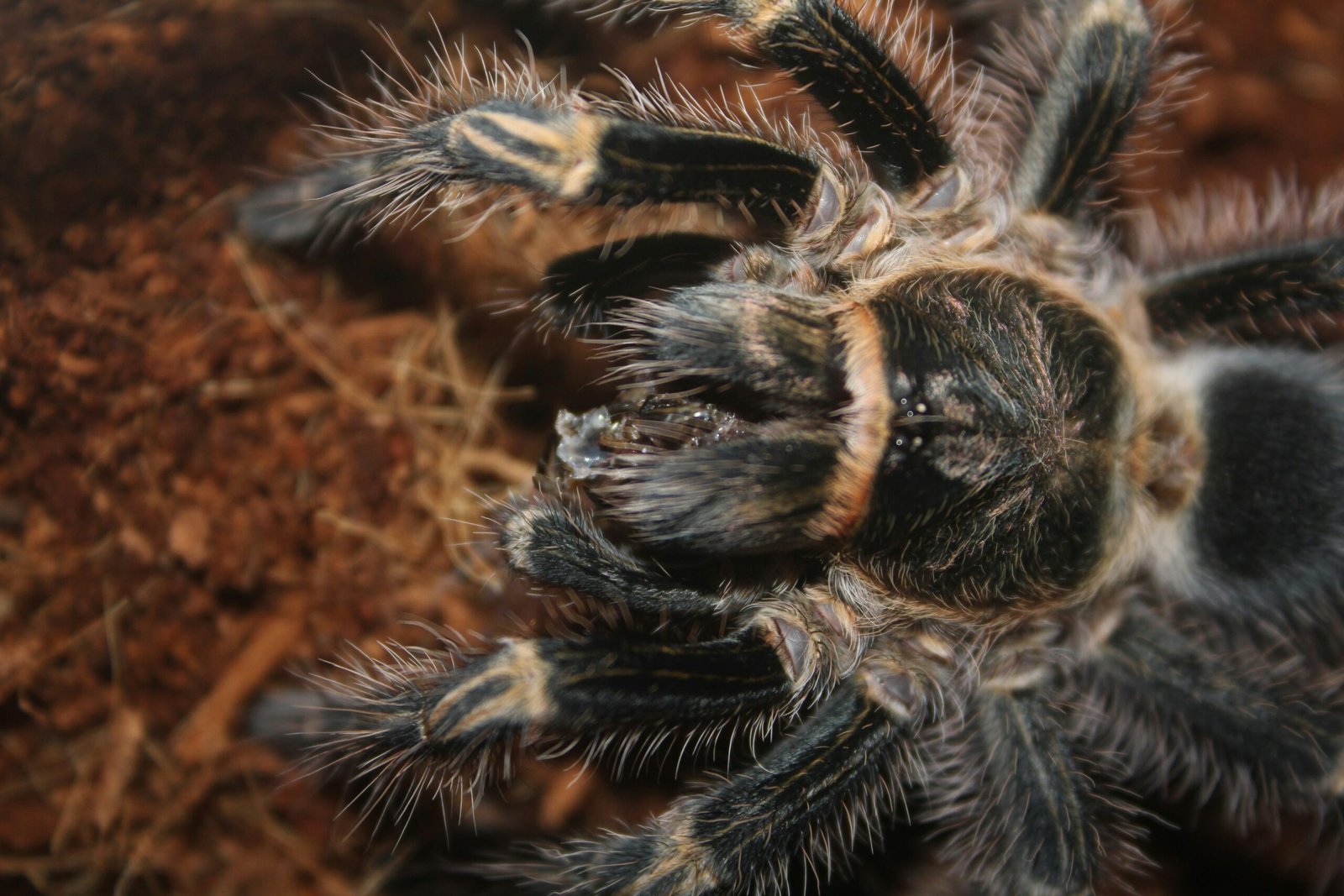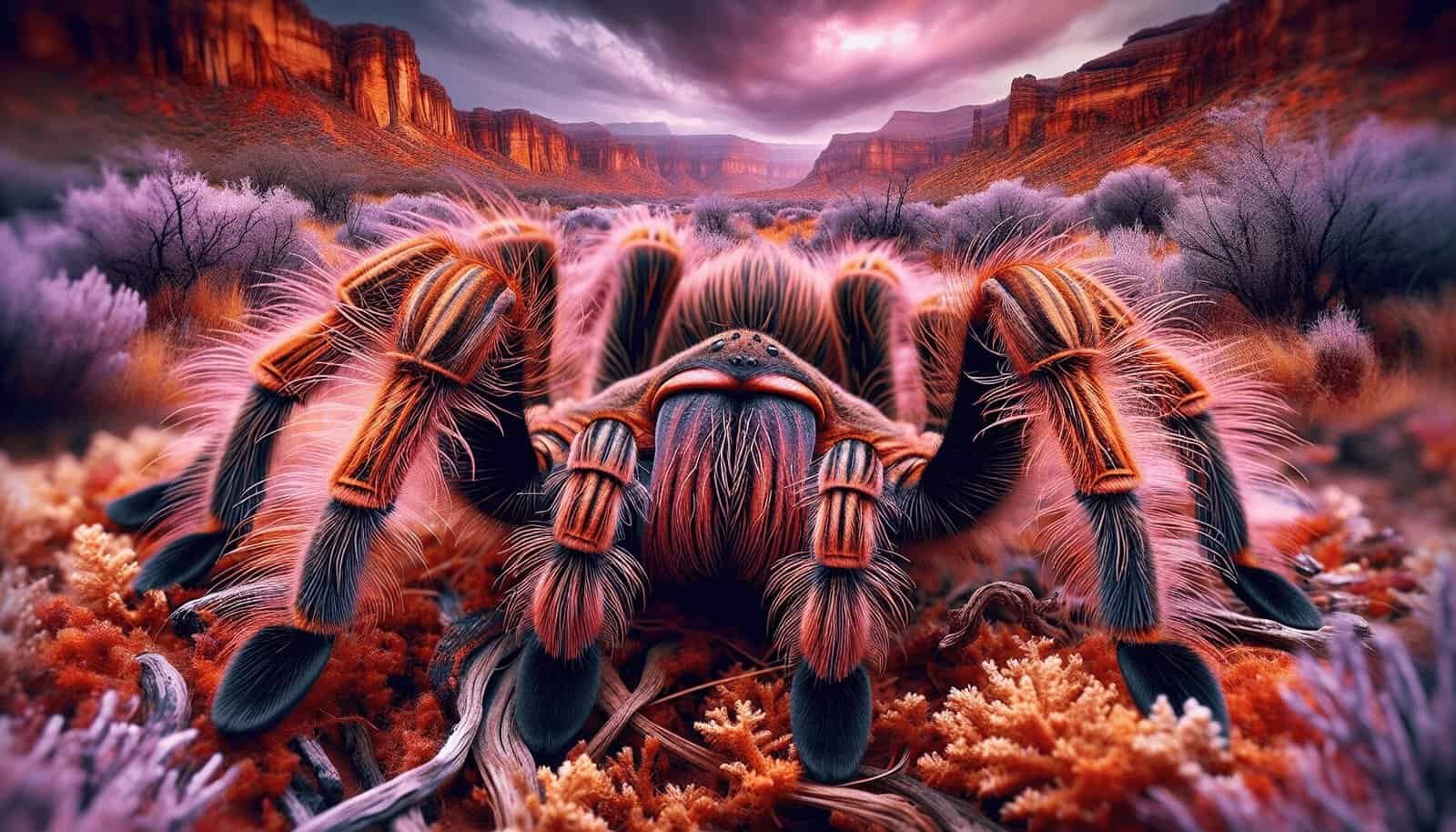Have you ever wondered about the natural range of the visually striking King baboon tarantula? This fascinating creature, with its impressive size and unique coloring, draws the attention of many arachnid enthusiasts. To understand where this captivating tarantula can be found, it’s essential to delve into its natural habitat, geographical distribution, and the environmental factors that influence its existence.
A Closer Look at the King Baboon Tarantula
The King baboon tarantula (Pelinobius muticus) is a species revered by tarantula enthusiasts for its bold appearance and intriguing behavior. Native to specific regions in Africa, this tarantula stands out with its reddish-brown to golden coloration and substantial size, often reaching up to 20 cm (about 8 inches) in leg span.
Physical Characteristics
The King baboon tarantula showcases a robust physique with thick, hairy legs and a large, stocky body. Its coloration can range from reddish-brown to shades of orange and gold, making it one of the more visually striking tarantulas. Unlike other tarantula species, the King baboon’s legs are covered with thin, spiny hairs that aid in protection against predators.
Behavioral Traits
This tarantula is known for its defensive nature and preference for burrowing. It’s a nocturnal predator, using its strong legs to dig intricate burrow systems where it spends most of its life. The King baboon tarantula is more aggressive than many of its counterparts, often standing its ground when threatened rather than retreating.

Geographical Distribution
Understanding the natural range of the King baboon tarantula involves exploring the specific geographical areas it inhabits. This tarantula is indigenous to the eastern part of Africa, particularly in countries like Kenya, Uganda, and Tanzania.
Eastern Africa: A Perfect Habitat
Eastern Africa offers a variety of biomes that cater to the needs of the King baboon tarantula. The region’s climate, vegetation, and soil composition are ideal for this terrestrial, burrowing spider.
| Country | Key Regions | Habitat Type |
|---|---|---|
| Kenya | Coastal regions, Savannahs | Dry forests, Grasslands |
| Uganda | Northern and eastern parts | Woodlands, Open fields |
| Tanzania | Northern regions, Serengeti | Grasslands, Sparse forests |
Climate and Environmental Conditions
The King baboon tarantula is well-adapted to the warm, semi-arid climates often found in its natural range. Temperatures typically fluctuate between 20°C and 35°C (68°F and 95°F), providing a warm environment suitable for these spiders. The relatively low humidity levels and seasonal rains also contribute to the creation of stable burrowing grounds.

Habitat Preferences
Beyond geographical locations, the King baboon tarantula has specific habitat preferences shaped by its needs for shelter, hunting, and reproduction.
Burrowing Habitats
Burrowing is an essential part of the King baboon tarantula’s life. It digs extensive burrow systems that can be several feet deep, providing protection from predators and extreme weather conditions. These burrows also offer a controlled environment for molting and nurturing young spiderlings.
Vegetation and Soil
The type of vegetation and soil quality in these regions play a crucial role in the distribution and survival of the King baboon tarantula. Sandy and clayey soils are preferred as they are easier to excavate. Meanwhile, areas with sparse vegetation are ideal as they prevent over-exposure to elements while allowing adequate space for hunting.
Availability of Prey
The King baboon tarantula feeds on a variety of invertebrates, including insects, small mammals, and other spiders. Its habitat must sustain a healthy population of prey to ensure its survival. These conditions are typically met in the semi-arid savannahs and scrublands of East Africa.

Challenges and Conservation
While the King baboon tarantula is not currently listed as endangered, it faces challenges that could impact its natural range and population.
Habitat Destruction
Deforestation, agricultural expansion, and urbanization can lead to the destruction of crucial habitats for the King baboon tarantula. As human activities encroach on natural landscapes, these spiders may lose their burrowing grounds and access to prey.
Climate Change
Shifting climate patterns pose another threat. Changes in temperature and rainfall can alter the conditions of their natural habitats, making it difficult for these tarantulas to thrive. Extended droughts or unseasonal rains can disrupt their life cycles, impacting their ability to reproduce and hunt.
Pet Trade
The King baboon tarantula is popular in the exotic pet trade, which can lead to over-collection from the wild. While captive breeding programs exist, the demand for wild-caught specimens puts additional pressure on natural populations.

Conservation Efforts
Efforts to conserve the natural range of the King baboon tarantula focus on habitat preservation and sustainable practices.
Protected Areas
Establishing and expanding protected areas in East Africa can help safeguard the natural habitats of this tarantula. National parks and wildlife reserves provide a refuge where they can live without the threat of habitat destruction.
Sustainable Trade Practices
Promoting sustainable captive breeding programs can reduce the demand for wild-caught King baboon tarantulas. Educating spider enthusiasts and vendors on the importance of ethical practices helps conserve wild populations.
Research and Monitoring
Continued research on the King baboon tarantula’s habits, population dynamics, and habitat requirements can inform conservation strategies. Monitoring their populations in the wild aids in understanding the impacts of environmental changes and human activities.

Conclusion
The natural range of the visually striking King baboon tarantula spans the diverse regions of East Africa, encompassing parts of Kenya, Uganda, and Tanzania. These tarantulas thrive in semi-arid environments with specific soil and vegetation conditions that support their burrowing lifestyle. While challenges such as habitat destruction and climate change pose risks, concerted conservation efforts are essential to ensure their survival. By understanding and protecting their natural range, you contribute to the continued existence of these captivating creatures in the wild.
So, next time you ponder the whereabouts of the King baboon tarantula, you’ll have a comprehensive understanding of its natural habitat and the importance of conservation efforts to preserve its existence.